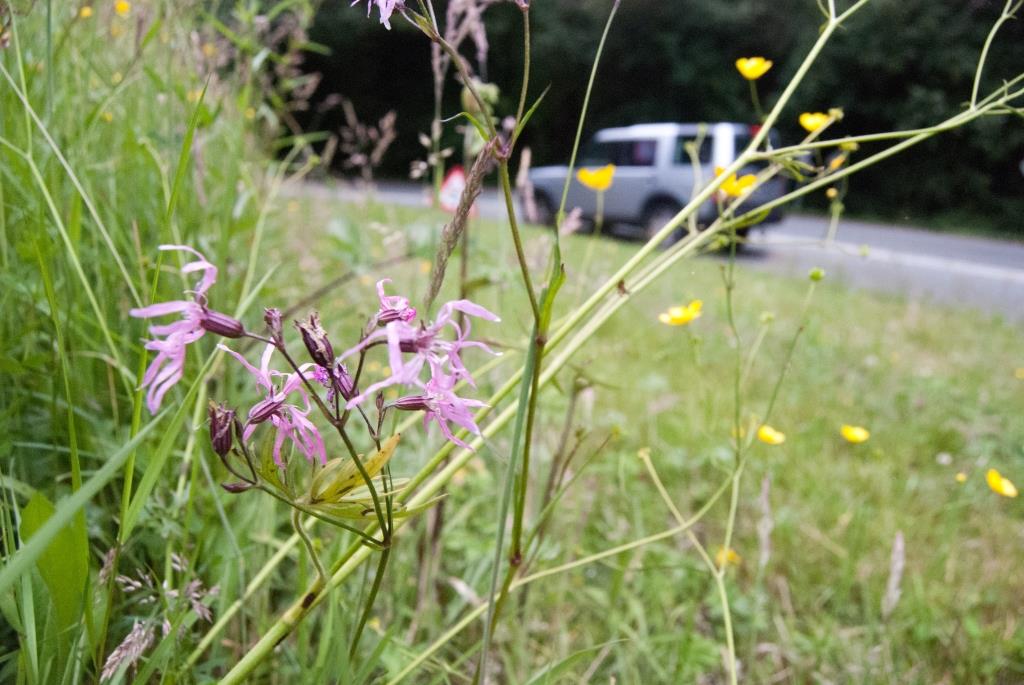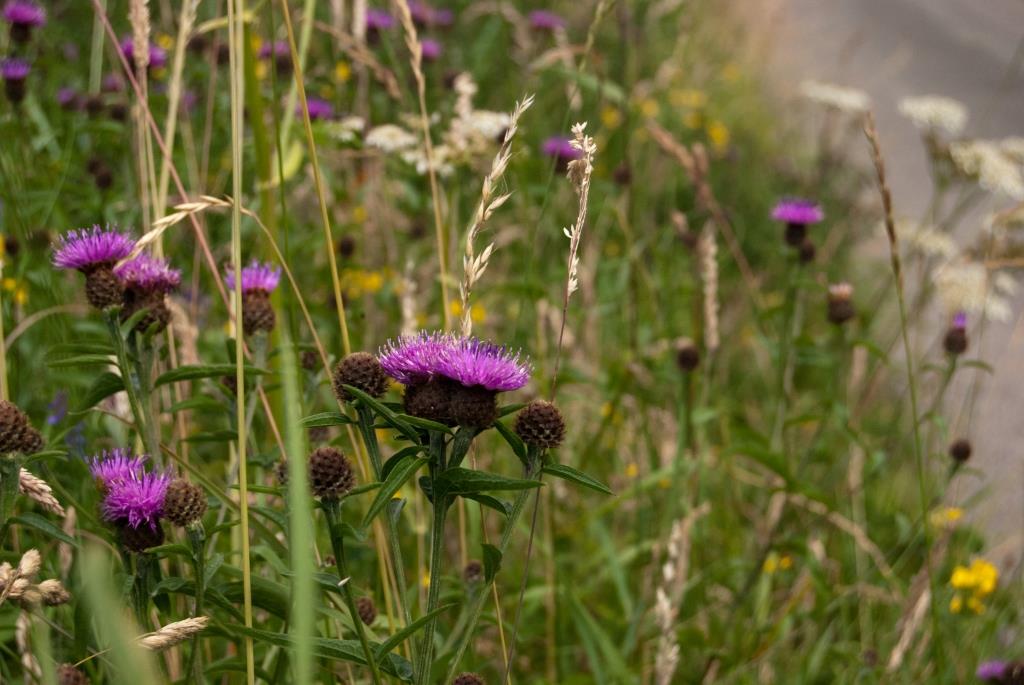Biodiversity
Latest News
A Starring Role for Nantclwyd’s Lesser Horseshoe Bats
22.05.2015
Living Landscape Brought Back to Life
05.12.2014
Facebook Page
Roadside verges
Life on the Edge - Protecting Denbighshire's Wildflowers
Roadside verges have become increasingly important as havens for wildlife because, unlike many other grassland habitats, they have been left untouched by fertilisers or pesticides that can destroy wild species.
 This means that they can support a variety of our most beautiful and scarce wildflowers, many of which have disappeared from the wider countryside. This in turn allows a range of wildlife to thrive; from bumblebees and butterflies; to reptile, amphibian, bird and small mammal species. Verges can also act as important corridors along which wildlife can move, connecting areas of habitat and preventing isolation of populations.
This means that they can support a variety of our most beautiful and scarce wildflowers, many of which have disappeared from the wider countryside. This in turn allows a range of wildlife to thrive; from bumblebees and butterflies; to reptile, amphibian, bird and small mammal species. Verges can also act as important corridors along which wildlife can move, connecting areas of habitat and preventing isolation of populations.
History
The traditional hay meadows on which these species would previously have been seen have experienced dramatic declines with over 97% having been lost in the UK since the 1930s. Changes in agricultural practices with the increase of ploughing, drainage, fertiliser and herbicide application and earlier cutting for silage have meant that species-rich meadows are now few and far between.
 Modern methods of verge cutting with a flail cutter machine combined with frequent cutting, starting early in the spring, have caused a decline in the value of verges for wildlife. Although most verges do benefit from a cut at some point in the year, ideally plants should be allowed to flower and set seed first, enabling the wildflowers to persist year-on-year and protecting the wildlife that feeds, shelters and nests there. Increased soil fertility from grass cuttings and scalping of soils also encourages coarser grasses and vigorous species to dominate to the detriment of the wildflowers. If left unmanaged, the verge will also become colonised by scrub and woody species.
Modern methods of verge cutting with a flail cutter machine combined with frequent cutting, starting early in the spring, have caused a decline in the value of verges for wildlife. Although most verges do benefit from a cut at some point in the year, ideally plants should be allowed to flower and set seed first, enabling the wildflowers to persist year-on-year and protecting the wildlife that feeds, shelters and nests there. Increased soil fertility from grass cuttings and scalping of soils also encourages coarser grasses and vigorous species to dominate to the detriment of the wildflowers. If left unmanaged, the verge will also become colonised by scrub and woody species.
Project
The project seeks to promote a programme of more sympathetic cutting of rural roadside verges in Denbighshire, allowing wildflowers and the associated wildlife to flourish. A low intensity management regime has been trialled since 2005 in Llanarmon-yn-ial, Llandegla and Bryneglwys. Apart from where road safety is an issue, cutting has been reduced and delayed to late summer / early autumn to avoid main flowering and seeding periods.
In 2013 a survey was conducted to assess the impacts of this regime. The study concluded that this management appears to be successful in promoting wildflower rich habitats. Verges supported a broad diversity of species, including some uncommon and rare, with no issues of road safety observed.
It is now the aim of the project to expand this policy to other areas of the County.




